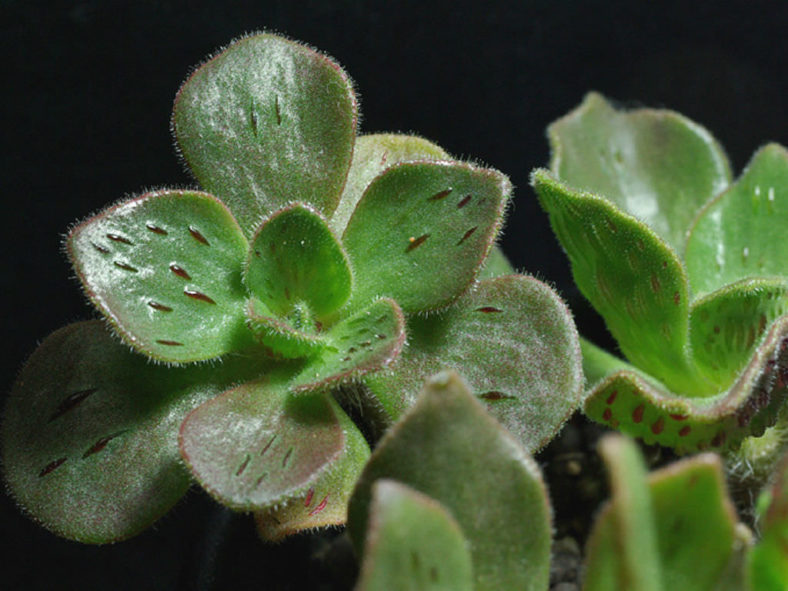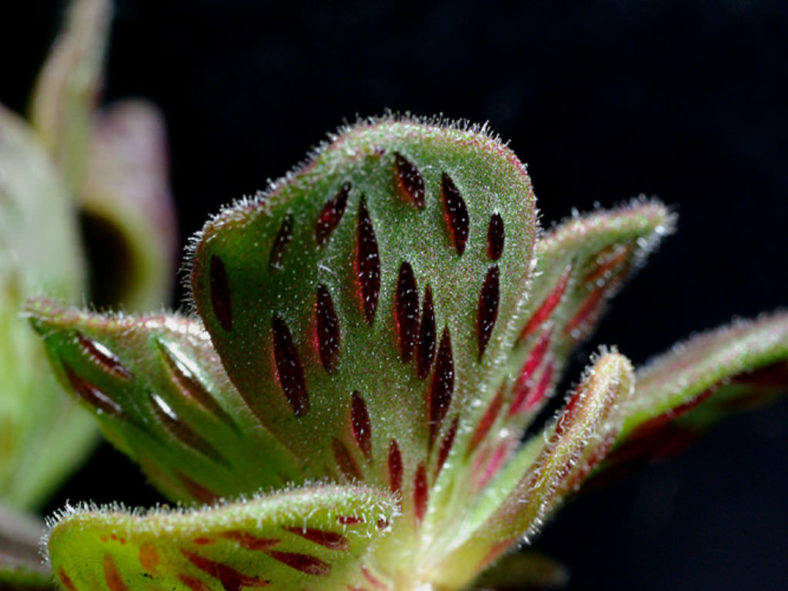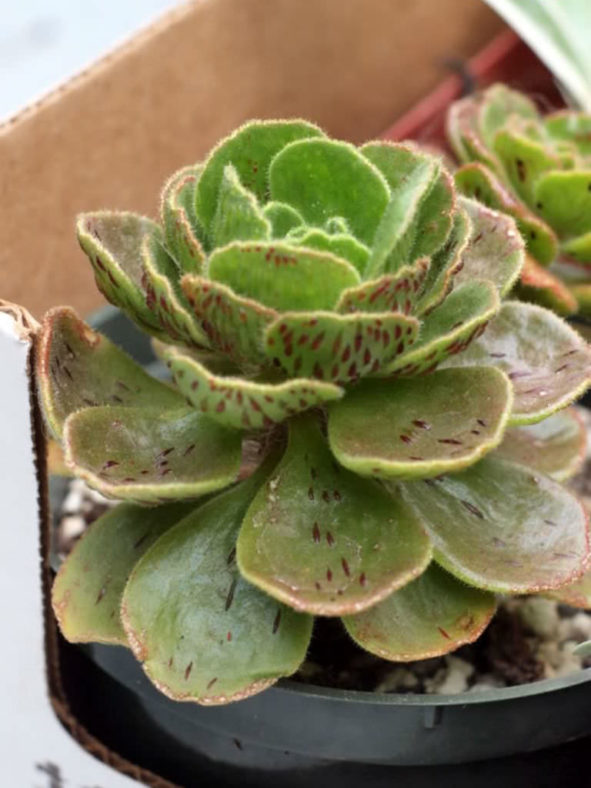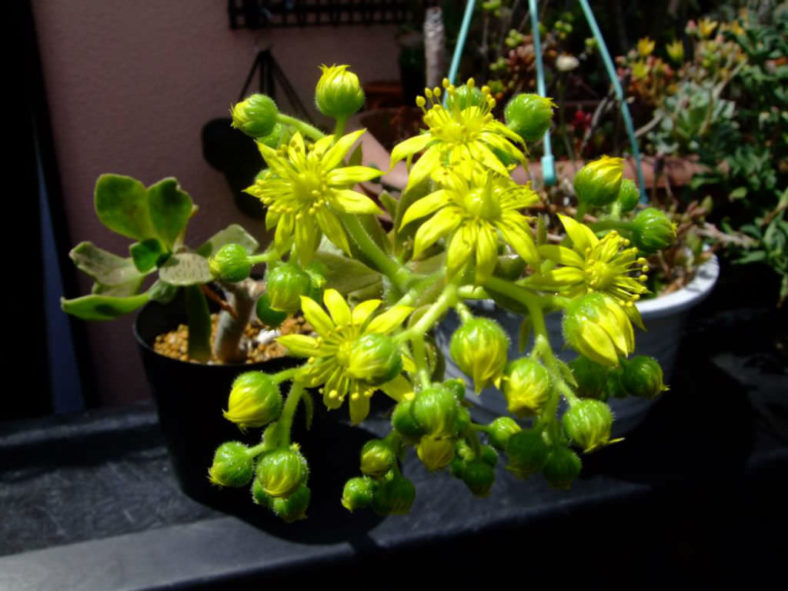Scientific Name
Aeonium smithii (Sims) Webb & Berthel.r
Common Name(s)
Smith's Giant Houseleek
Synonym(s)
Sempervivum foliosum, Sempervivum hispicaule, Sempervivum smithii
Scientific Classification
Family: Crassulaceae
Subfamily: Sempervivoideae
Tribe: Aeonieae
Genus: Aeonium
Etymology
The specific epithet "smithii" (pronounced "SMITH-ee-eye") honors Christen Smith (1785–1816), a Norwegian physician, economist, and naturalist, particularly a botanist.
Origin
Aeonium smithii is native to the Canary Islands (Tenerife). It grows on rocks and cliffs, most commonly in forest zones at elevations between 490 and 7,050 feet (150 and 2,150 m).
Description
Aeonium smithii is a densely branched succulent shrublet with rather flattish rosettes of inverse kite-shaped leaves at the end of the densely hairy branches. It can grow up to 2 feet (60 cm) tall, with rosettes up to 6 inches (15 cm) in diameter. The branches can reach a diameter of up to 1.2 inches (3 cm). As the branches age, they tend to lose the hairs, which can measure up to 0.3 inches (0.8 cm) long. The leaves are glossy on the upper surface and have longitudinal brownish stripes, mainly on the lower surface, as well as conical cilia and some additional hairs along the margins.
In spring, Aeonium smithii produces star-shaped, 8- to 12-merous flowers that are yellow with reddish lines, arranged in clusters on leafy stalks that can grow up to 16 inches (40 cm) tall. The flower cluster can reach up to 6 inches (15 cm) in height and 4.6 inches (9 cm) in diameter.

How to Grow and Care for Aeonium smithii
Hardiness: USDA hardiness zones 9b to 11b: from 25°F (-3.9°C) to 50°F (10°C).
Aeoniums do not like hot or dry weather. They may go dormant in summer and do not require any water except in arid conditions. In extreme heat, their leaves will curl to prevent excessive water loss. Growing them in moist shade will keep them growing, but their true growth season is winter to spring when temperatures are cool, 65°F to 75°F (18°C to 24°C), and damp. In the winter, water whenever the soil has dried out. Test by poking your finger down into the soil an inch or two (2.5 to 5 cm). Too much moisture or leaving them in wet soil will cause root rot.
A sandy loam or regular potting mix is better than a mix specifically designed for cacti and succulents since Aeoniums need some moisture. If you are growing them in containers, repot them every 2 to 3 years with fresh potting soil.
Feed during the growing season with a half-strength balanced fertilizer every month or so. Do not feed while the plant is dormant.
Learn more at How to Grow and Care for Aeonium.
Links
- Back to genus Aeonium
- Succupedia: Browse succulents by Scientific Name, Common Name, Genus, Family, USDA Hardiness Zone, Origin, or cacti by Genus
Photo Gallery
Click on a photo to see a larger version.


